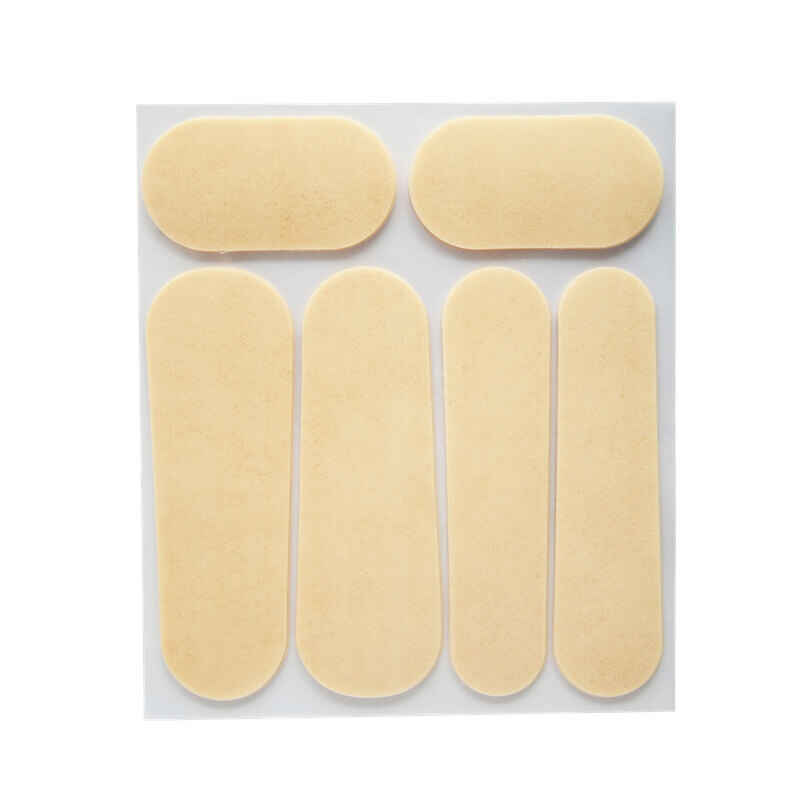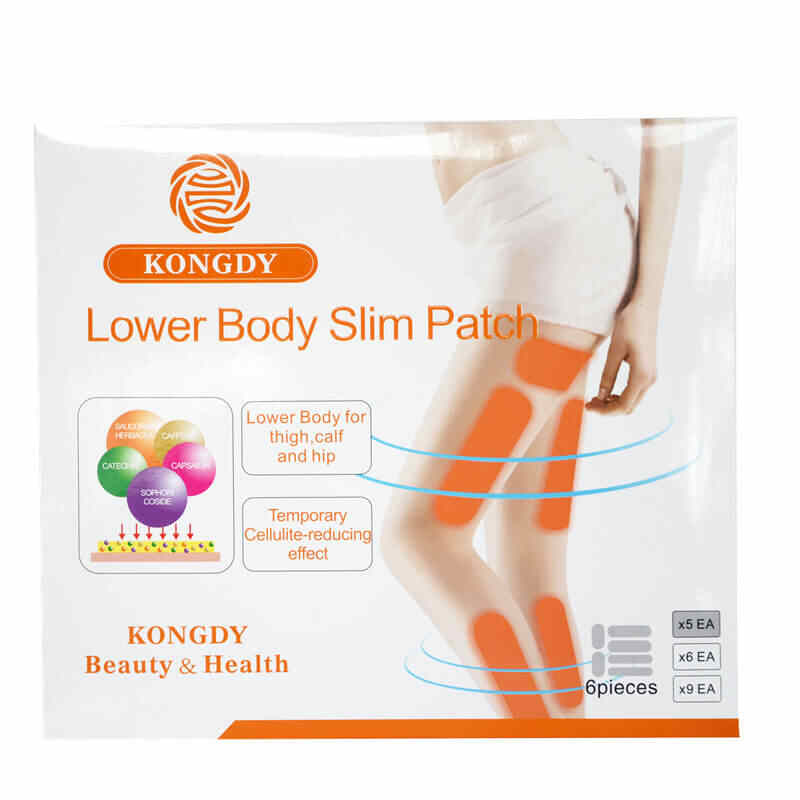What’s the Difference Between a Weight Loss Patches Manufacturer and a Weight Loss Patches Supplier?
The global health and wellness industry has seen an increasing demand for slimming products, particularly weight loss patches. As more brands enter this competitive market, entrepreneurs often encounter two critical terms: weight loss patches Manufacturer and weight loss patches Supplier. While these terms may seem interchangeable, they actually refer to different roles within the supply chain. Understanding their differences is essential for building a successful business, whether you plan to launch Private Label weight loss patches or develop Custom weight loss patches through weight loss patches OEM services.
In this article, we’ll explore the key distinctions, responsibilities, and advantages of working with manufacturers versus suppliers, and how choosing the right partner can impact your brand’s growth and market success.

1. Defining a Weight Loss Patches Manufacturer
A weight loss patches Manufacturer is the company that actually produces the product. They are directly responsible for:
Research and Development (R&D): Creating effective formulations and patch technologies.
Production: Manufacturing patches according to strict quality and safety standards.
Compliance: Ensuring patches meet global certifications such as GMP, ISO, FDA, or CE.
OEM and Customization: Offering Custom weight loss patches based on a brand’s unique requirements.
In short, the manufacturer is the backbone of the product, handling everything from raw materials to finished patches.
2. Defining a Weight Loss Patches Supplier
A weight loss patches Supplier acts as the distributor or middle party who provides the product to businesses. They may not produce the patches themselves but play a vital role in:
Sourcing products directly from manufacturers.
Managing inventory and logistics.
Offering Private Label weight loss patches for brands that want quick market entry.
Providing flexibility in order size, sometimes offering smaller minimum order quantities (MOQs) than manufacturers.
Suppliers bridge the gap between manufacturers and businesses, making products accessible without requiring brands to manage production directly.
3. Key Differences Between Manufacturer and Supplier
| Aspect | Weight Loss Patches Manufacturer | Weight Loss Patches Supplier |
|---|---|---|
| Core Function | Produces patches, develops formulas, ensures compliance | Distributes patches, manages logistics, connects brands with products |
| Customization | Offers Custom weight loss patches and weight loss patches OEM | Limited; usually provides Private Label weight loss patches |
| Minimum Order Quantity (MOQ) | Usually higher, as they produce in bulk | Lower, suitable for startups or small businesses |
| Control Over Quality | Full control of raw materials, technology, and compliance | Relies on manufacturer’s quality assurance |
| Best For | Brands seeking unique formulations and large-scale growth | Brands testing the market or requiring quick entry |
4. Benefits of Working with a Weight Loss Patches Manufacturer
Full Customization: With a weight loss patches Manufacturer, you can create Custom weight loss patches tailored to your target audience.
OEM Support: They can design unique formulas, packaging, and even patch technology.
Quality Assurance: Direct access to testing, compliance, and certifications ensures product safety.
Scalability: Manufacturers can handle larger production volumes as your business grows.
If your brand aims for long-term differentiation, choosing a weight loss patches OEM partner is often the best choice.
5. Benefits of Working with a Weight Loss Patches Supplier
Faster Market Entry: Suppliers often have ready-made Private Label weight loss patches that you can launch quickly.
Lower MOQ: Perfect for startups with limited budgets who want to test the market.
Flexibility: Suppliers often manage logistics and can provide multiple product options from different manufacturers.
Lower Risk: Since suppliers stock pre-made patches, businesses can experiment with less investment.
For new entrepreneurs or e-commerce businesses, a weight loss patches Supplier can be an easier entry point into the market.
6. Private Label vs. Custom: Where Manufacturers and Suppliers Fit
Private Label weight loss patches:
Typically offered by weight loss patches Suppliers.
Ideal for businesses looking to sell existing formulas under their own branding.
Faster approval and launch.
Custom weight loss patches:
Provided by weight loss patches Manufacturers through OEM services.
Allows complete control over ingredients, packaging, and branding.
Requires longer timelines and higher investment.
This distinction shows that suppliers are better suited for speed and low entry costs, while manufacturers support long-term brand uniqueness.
7. How to Choose Between a Manufacturer and a Supplier
When deciding whether to partner with a weight loss patches Manufacturer or a weight loss patches Supplier, ask yourself the following:
Do you want to launch quickly with minimal investment? → Choose a Supplier.
Do you need unique formulations and branding to stand out long-term? → Work with a Manufacturer.
Is your business ready to handle higher MOQs and longer lead times? → Manufacturer is the right fit.
Do you want to test the market first with less risk? → Supplier is the smarter choice.
Many successful brands start with suppliers for Private Label weight loss patches, then later transition to manufacturers for Custom weight loss patches once demand grows.
8. The Ideal Strategy: Combining Both
For startups and growing brands, the most convincing strategy is to leverage both:
Step 1: Start with a Supplier – Use Private Label weight loss patches to test demand with lower risk and investment.
Step 2: Scale with a Manufacturer – Once your brand gains traction, move to weight loss patches OEM and create Custom weight loss patches to differentiate your brand.
Step 3: Build Long-Term Partnerships – Establish strong ties with a weight loss patches Manufacturer who can support global expansion.
This staged approach minimizes risk while building a path to sustainable growth.
9. Final Thoughts
The main difference between a weight loss patches Manufacturer and a weight loss patches Supplier lies in their roles. Manufacturers produce and customize patches, offering full OEM services and long-term scalability. Suppliers, on the other hand, provide ready-made Private Label weight loss patches, offering flexibility, lower MOQs, and quick entry into the market.
Both are essential in the weight loss patch industry. Your choice depends on your business goals, budget, and timeline. For startups, suppliers are the best entry point, while for established brands, manufacturers are key to creating unique and differentiated Custom weight loss patches.
Related Questions and Answers
Q1: Can a weight loss patches Supplier also act as a Manufacturer?
A1: Some suppliers have in-house manufacturing, but many act as intermediaries sourcing from third-party manufacturers.
Q2: Which is better for startups—Manufacturer or Supplier?
A2: Suppliers are better for startups due to lower MOQs and faster time-to-market.
Q3: Why do manufacturers usually require higher MOQs?
A3: Because they produce in bulk and need to cover costs for raw materials, labor, and production runs.
Q4: Are Custom weight loss patches more expensive than Private Label patches?
A4: Yes. Custom patches involve R&D, new formulations, and testing, making them costlier than Private Label options.
Q5: Can I start with Private Label and later switch to Custom weight loss patches?
A5: Absolutely. Many brands start with Private Label to test demand, then partner with a weight loss patches Manufacturer for OEM customization.






